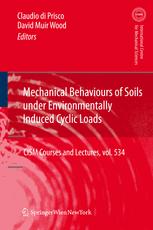

Most ebook files are in PDF format, so you can easily read them using various software such as Foxit Reader or directly on the Google Chrome browser.
Some ebook files are released by publishers in other formats such as .awz, .mobi, .epub, .fb2, etc. You may need to install specific software to read these formats on mobile/PC, such as Calibre.
Please read the tutorial at this link: https://ebookbell.com/faq
We offer FREE conversion to the popular formats you request; however, this may take some time. Therefore, right after payment, please email us, and we will try to provide the service as quickly as possible.
For some exceptional file formats or broken links (if any), please refrain from opening any disputes. Instead, email us first, and we will try to assist within a maximum of 6 hours.
EbookBell Team

4.7
26 reviewsT. Wichtmann, T. Triantafyllidis: Behaviour of granular soils under environmentally induced cyclic loads. - D. Muir Wood: Constitutive modelling. - C. di Prisco: Creep versus transient loading effects in geotechnical problems. - M. Pastor et al.: Mathematical models for transient, dynamic and cyclic problems in geotechnical engineering. - M. Pastor: Discretization techniques for transient, dynamics and cyclic problems in geotechnical engineering: first order hyperbolic partial diffential equations. - M. Pastor et l.: Discretization techniques for transient, dynamic and cyclic problems in geotechnical engineering: second order equation. - C. di Prisco: Cyclic mechanical response of rigid bodies interacting with sand strata. - D. Muir Wood: Macroelement modelling. - M. F. Randolph: Offshore design approaches and model tests for sub-failure cyclic loading of foundations. - M.F. Randolph: Cyclic interface shearing in sand and cemented solis and application to axial response of piles. - M. F. Randolph: Evaluation of the remoulded shear strength of offshore clays and application to pipline-soil and riser-soil interaction.
The book gives a comprehensive description of the mechanical response of soils (granular and cohesive materials) under cyclic loading. It provides the geotechnical engineer with the theoretical and analytical tools necessary for the evaluation of settlements developng with time under cyclic, einvironmentally idncued loads (such as wave motion, wind actions, water table level variation) and their consequences for the serviceability and durability of structures such as the shallow or deep foundations used in offshore engineering, caisson beakwaters, ballast and airport pavements and also to interpret monitoring data, obtained from both natural and artificial slopes and earth embankments, for the purposes of risk assessment and mitigation.